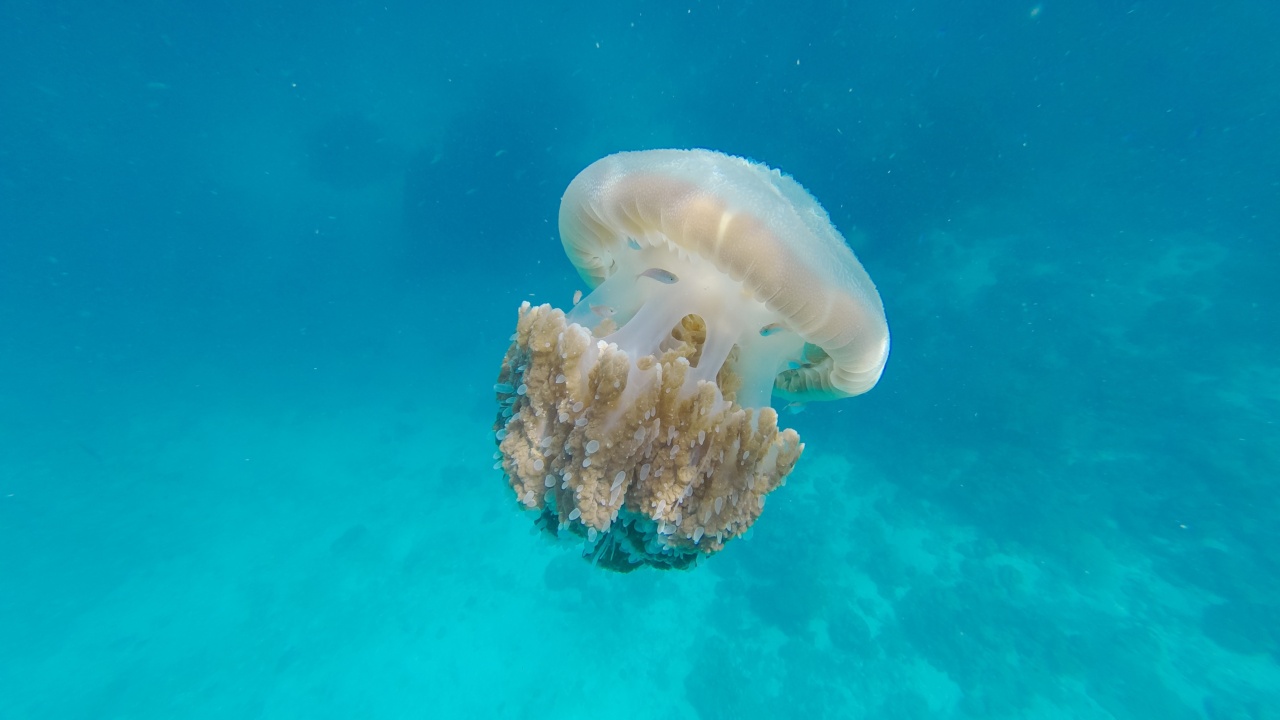The ocean is home to a vast array of fascinating marine life, but not all creatures you encounter beneath the waves are friendly.
While most sea creatures are harmless and would rather avoid human contact, some can pose dangers to swimmers, divers, and beachgoers. Knowing how to handle encounters with dangerous marine life is essential for anyone spending time in the ocean. In this article, we will discuss various types of hazardous sea creatures and provide guidance on how to cope with them.
1. Sharks
Sharks are perhaps the most infamous marine creatures, often portrayed as bloodthirsty man-eaters in movies. However, the reality is that sharks rarely pose a threat to humans, and most species are not dangerous.
Nevertheless, it is crucial to be prepared and know how to respond if you encounter a shark while in the water.
If you spot a shark nearby:.
– Stay calm and try to maintain eye contact with the shark.
– Back away slowly, but do not turn your back to the shark.
– If the shark approaches, make yourself appear larger by raising your arms above your head.
– Do not provoke or harass the shark in any way.
– If bitten, apply pressure to the wound and seek immediate medical attention.
2. Jellyfish
Jellyfish are beautiful creatures, but they can pack a painful sting. While most jellyfish stings are not life-threatening, they can cause discomfort and allergic reactions in some individuals.
Here’s what you should do if you or someone nearby is stung by a jellyfish:.
– Remove any visible tentacles using tweezers or a similar tool.
– Rinse the affected area with vinegar to neutralize the venom.
– Soak the area in hot water (not scalding) or apply a hot compress to alleviate pain.
– If symptoms persist or worsen, seek medical assistance immediately.
3. Stingrays
While stingrays are generally docile creatures, they can become agitated if provoked or accidentally stepped on. Stingray stings are extremely painful and require proper care.
If stung by a stingray:.
– Immediately rinse the wound with warm water to remove any remaining barbs.
– Soak the affected area in hot water (as hot as can be tolerated) to relieve pain.
– Apply an antibiotic ointment to prevent infection.
– Seek medical attention, particularly if the wound continues to bleed or if you experience difficulty breathing.
4. Sea Snakes
Encounters with sea snakes are relatively rare, especially in popular beach areas. Most sea snake species are harmless, but a few are venomous. It’s important to exercise caution if you spot a sea snake while swimming or snorkeling:.
– Keep a safe distance and avoid any attempts to handle or interact with the snake.
– Notify lifeguards or beach authorities about the sighting.
– If bitten by a sea snake, seek immediate medical help. Keep the affected limb immobilized and as still as possible.
5. Stonefish
Stonefish are masters of camouflage, so stepping on one while wading through shallow waters is a real possibility. Stonefish stings are excruciatingly painful and can be life-threatening if not treated promptly.
If you are stung by a stonefish:.
– Rinse the wound with seawater (not freshwater) to avoid activating venomous spines.
– Immerse the affected area in hot water (as hot as can be tolerated) to alleviate pain.
– Seek medical attention immediately, as antivenom may be necessary.
6. Box Jellyfish
Box jellyfish, particularly the species found in Australian waters, are among the deadliest creatures on Earth. Their tentacles contain venom that can cause heart failure or paralysis. If you come into contact with a box jellyfish:.
– Call for emergency assistance immediately.
– Remove yourself or the victim from the water as quickly as possible.
– Pour vinegar over the tentacles to neutralize the venom.
– Begin CPR if needed, and continue until medical professionals take over.
7. Barracudas
Barracudas are fearsome-looking creatures with sharp teeth, but they typically pose little threat to humans.
However, there have been rare cases of barracuda attacks, usually when they are attracted by shiny objects or mistake a swimmer’s movements for prey:.
– Avoid wearing shiny jewelry while swimming.
– Keep a safe distance if you spot a barracuda, and do not make sudden or jerky movements.
– If a barracuda approaches, try to face it and slowly swim away without turning your back.
8. Fire Coral
Fire coral, despite its deceptive name, is not actually coral but a type of marine organism that can cause painful stings if touched. It appears similar to underwater plants and can be found in tropical and subtropical waters.
If you accidentally come into contact with fire coral:.
– Rinse the affected area with seawater to remove any remnants.
– Apply a hydrocortisone cream or calamine lotion to soothe the pain.
– Take an over-the-counter antihistamine to reduce itching and allergic reactions.
9. Lionfish
Lionfish, with their vibrant colors and flamboyant fins, are popular among aquarium enthusiasts. However, they are also venomous and possess spiky dorsal fins that can deliver a painful sting if not careful.
Take the following precautions when encountering lionfish:.
– Do not touch or attempt to handle lionfish, as they will defend themselves if threatened.
– If stung, immerse the affected area in hot water (not scalding) or apply a hot compress to relieve pain.
– Seek medical attention if symptoms persist or worsen.
10. Crocodiles
Crocodiles inhabit both fresh and saltwater environments, and encounters with these powerful reptiles can be extremely dangerous.
While crocodile attacks at sea are rare, they may occur in estuaries and coastal areas where the saltwater and freshwater mix. If you encounter a crocodile:.
– Keep a safe distance and avoid swimming in areas known for crocodile sightings.
– Do not approach or provoke the crocodile in any way.
– If attacked, aim for the eyes and snout while trying to escape.
– Seek immediate medical attention regardless of the severity of the attack.































